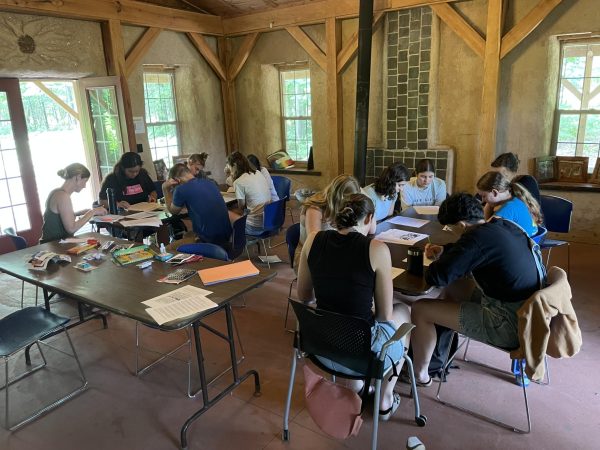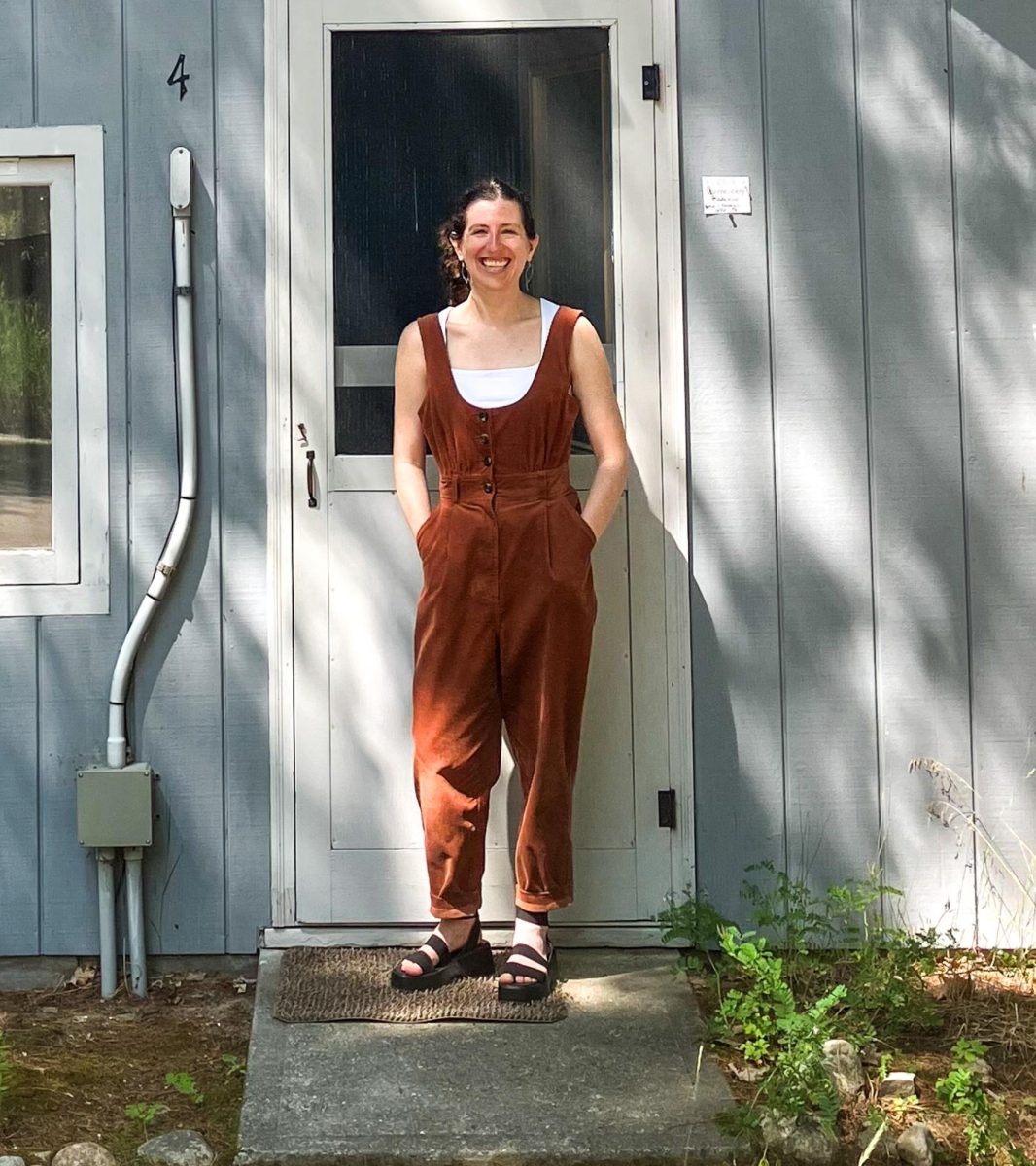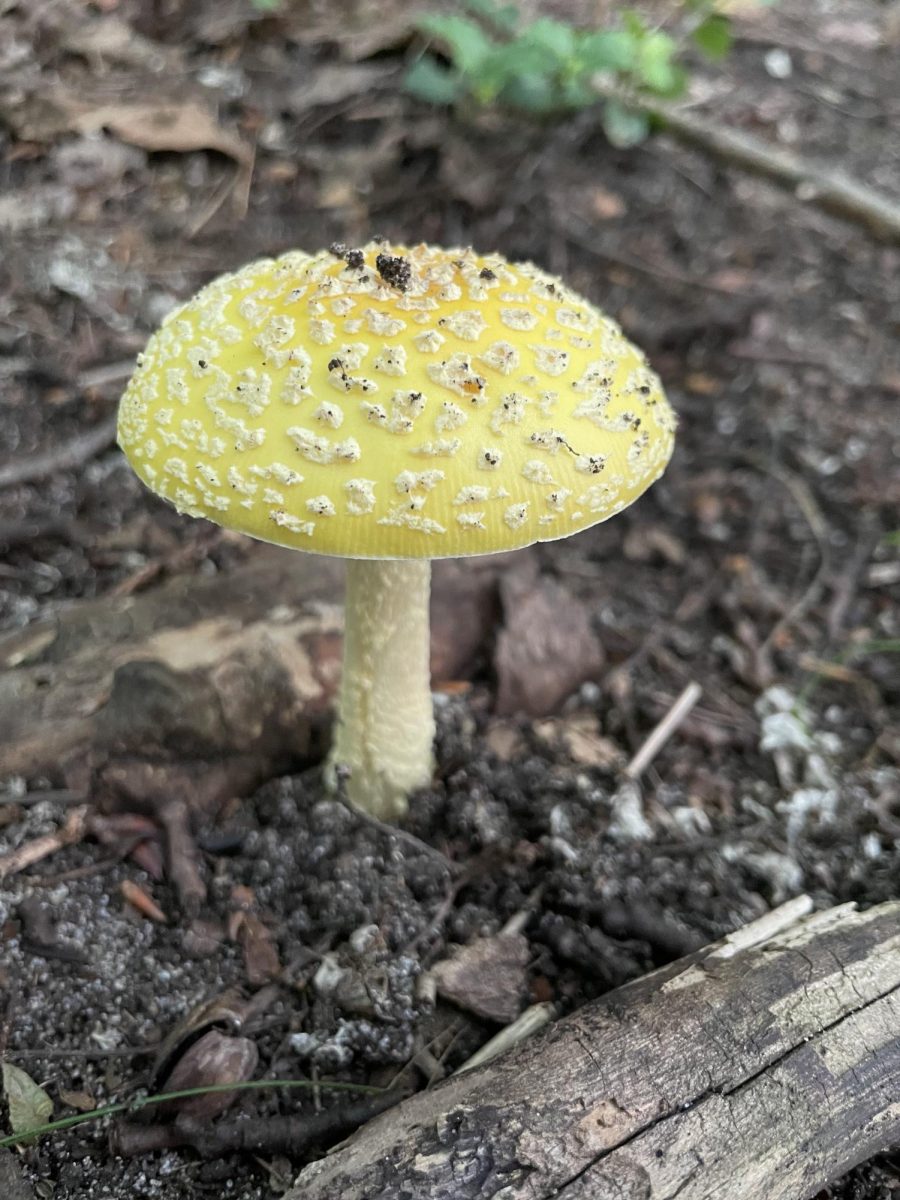On June 23, Dr. Madeleine Wattenberg, assistant professor of writing at Lakeland, began a six-week artist-in-residence experience at the University of Michigan Biological Station. Through conversations on poetry and nature, she underscored the valuable connection between science and humanity.
As part of her artist residency, she gave a lecture, led workshops on ecopoetry, visited classes, and worked on a manuscript.
During her first week at the station, she gave a lecture titled “Queer Clearings: Gender, Nature and Poetry.” Wattenberg introduced students to the work of writers “who think through gender and sexuality through nonhuman nature, through our ecosystems.”
Scientists give most of the station’s weekly lectures, which focus on local ecosystems and global warming – “sciencey stuff,” Wattenberg said. “I think it was a little rare for a humanities perspective to be offered in the lectures… People sort of felt like there was a gap in terms of the humanities,” she said, “and so I got a lot of responses that were like, ‘we need more of this.’”
Wattenberg also gave weekly workshops on Sundays, which were open to the public. The first introduced ecopoetry. Then she led a workshop on ecoerasures. “We took news articles about environmental degradation or about specific species – and also about Douglas Lake itself, to stay local – and then the class created erasure poems out of those materials.” Another workshop, called “Imaginative Futures,” included writing speculative poems about the future environment from animal perspectives.
“My most experimental workshop,” she said, “was writing poems plants can read, where we tried to conceptualize what a poem would look like for a plant audience. We didn’t really figure it out.” Wattenberg laughed and continued, “We did some brainstorming, and we also read some poems out loud to plants and tried to see if they responded – mixed reactions. But it was a good time.”

Besides teaching workshops, Wattenberg visited several undergraduate courses. These included the Art of Observation and Insight from Trees, part of Great Lakes Arts, Cultures and Environments. GLACE is a place-based interdisciplinary humanities program at the University of Michigan Biological Station.
She also hosted a weekly writers’ hour. Participants could respond to writing prompts or request feedback on poems.
In addition, she used the time in Michigan to revise her manuscript, an expansion of her Ph.D. dissertation on water systems and algae blooms. “Being right by a lake was very productive for those revisions, because the environment matched the content.”
During her stay, Wattenberg lived in a cabin by Douglas Lake in northern Michigan, just 30 miles from the Upper Peninsula. While her cabin lacked mice, others in the area housed the creatures, who often earned names from their human roommates. One of the faculty members’ children had a chipmunk named Pistachio.
In contrast with the farms and corn fields on Wattenberg’s drive to Lakeland, the biological station is located on the ancestral land of the Burt Lake Band of Ottawa and Chippewa people. While much of the surrounding land succumbed to logging and fires, the biological station remains forested.
Hemmed in by 10,000 acres of trees, the people at the biological station formed a tight-knit community. Many faculty and researchers brought their families. “The older kids would just wander around by themselves,” Wattenberg said, “because it’s, you know, a super, super safe place. But then, also, there were mutual agreements about some parents taking care of kids while other parents were off teaching. Just kind of a good example, I think, of community care and how people could support each other.”
Although Wattenberg was born in Kalamazoo, Mich., – a four-hour drive south of the station – the northern Michigan environment had a few surprises for her. When she arrived, she saw massive dragonfly casings littering the ground. Dragonflies, upon maturing from their larvae stage into adulthood, crawl out of their old exoskeleton, called an exuvia. That was just her first intriguing insect encounter.
One night, as she was falling asleep, she heard a “really loud click sound, almost like a spark, and it was kind of rhythmic, but not perfectly.”
“I started hunting around in my cabin,” she said, “and I finally picked up my outlet, and underneath it was this beetle… and the clicking stopped.” She couldn’t believe such a tiny creature could make so much noise. “Not possible,” she said. But the next day at lunch, she shared the story, and someone at the table said, “it’s a click beetle.”
“If you ever had a question, someone there would know the answer,” Wattenberg said.
Questions and curiosity emerged as a major theme of her stay.
“One thing I was really struck by while I was there,” she said, “is that any time I eavesdropped on a conversation, it was people – all the way from the undergraduates to researchers and the faculty and the staff – talking super excitedly about something they had seen that day.” The people at the biological station were thrilled to participate in mouse scruffing – safely holding a mouse by the scruff of its neck for research – and to see rare animals.
“Everyone was excited to see snakes, and was excited to see bugs, was just super, super curious about the world,” she said. “And I really loved being in that. And so, I think, curiosity is always a really important lesson to relearn.”
Curiosity and a random Google search led Wattenberg to a list of unconventional artist residencies and the biological station. “If you are a poet writing about the environment,” she said, “you have to actually exist where the things you’re writing about exist.”
The biological station gave her more than just a chance to write and teach poetry and exist in her element. It unearthed a community where curiosity is at the core of connecting science and humanities.



